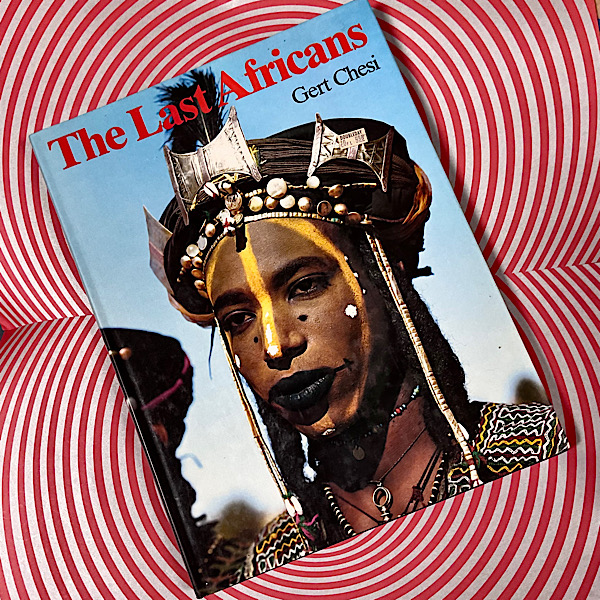The Last Africans by Gert Chesi
The Last Africans by Gert Chesi, a fine copy in dust jacket, 33 b/w, 153 color photo illus, many full pg & 18 dble-pg spreads, peoples & ceremonies, 245 pp. 9.5″-13″, Rizzoli Per-linger, 1977
“In this book, the author has tried to portray those African civilizations which are on the verge of exchanging their old traditions for new values and a new way of life. And although they are still a part of the unexplored Africa of former times, an Africa that existed only in the fantasy of the Europeans, who had not yet discovered the country’s gold nor its slaves, they are compelled to compete with a new civilization, a battle they, being the more vulnerable, will eventually lose.
Our industrial civilization has swept over Africa with tremendous force, mercilessly destroying a culture that for thousands of years dominated the peoples of this continent. Without warning old traditions were suddenly forced to make way for new laws, and the young African of today is in a predicament, for within one short century he has lost one culture without as yet having been able to replace it with a new one of his own making.
This book is pervaded with a touch of idealism, which may well be at variance with the reality of Africa today. For the “Last Africans” described in this book have an untouched quality about them which is probably no more than European wishful thinking. It is as if we expected the silent dreams of our hopelessly industrialized society, which itself has no more room for its dreams, to come true in what seems to us to be a paradise.
Many Africans will regard this book in a different light, as it shows a part of their life they are trying to overcome.
And although Africa still has enough room for people who have kept up their old traditions and still lead a natural life, it does not really want them. Most African politicians are fighting a fierce battle against what they call the backwardness of the rural population. At the same time they are trying to encourage foreign investors to set up industries in their countries. Everything new is believed to be a sign of progress and holds a greater fascination for them than the old traditions which they want to outgrow as soon as pos-sible.
New classes now dominate the African scene: the intellectual, the worker, the politician. And these groups are beginning to form a new African identity which will create new values without regard to old traditions. New roads will be built, remote areas will become accessible, and these new values will eventually reach the people who still cultivate the old traditions and try to protect them from the overwhelming influence of this new civi-lization.
And it is to these few that this book is dedicated, to these “Last Africans” who are gradually yielding to the terrific force of this civilization and whose ideals will die with them as there will be no heir to inherit them.”
—-copy from The last Africans book-jacket flap
“ The Last Africans, by Gert Chesi, is also a ‘coffee-table’ book, but very different from Bamert’s ‘art-object’-oriented one. It is lavish in the extreme, the layout spectacular, the photographs superb – including portraiture, landscape, architecture, market-places, and people at work, at rest, and engaged in rituals. Basically this is a book of ‘art photography’, so that the landscape and architecture becomes ‘art’ and the people themselves become ‘art objects’… beautiful beads were exchanged for miserable rags which were always torn, dirty and full of vermin’ (p. 18). There are no photographs to illustrate this dreadful series of events; yet perhaps all is not lost, for we are told ‘When travellers tell of the infinite poverty of the population, it is only partly true, for the judgement is a European one and what we consider poverty is often no more than a form of contentment we do not know’”
—review from Africa: Journal of the International African Institute, Vol. 53, No. 3 (1983), pp. 99-104:
$ 45.00




